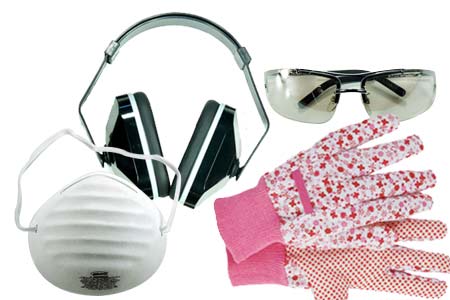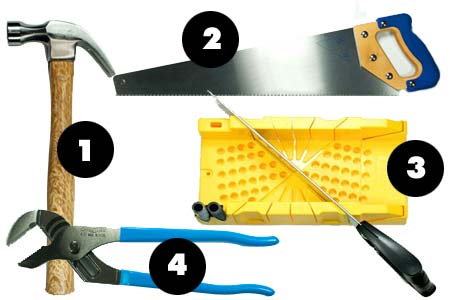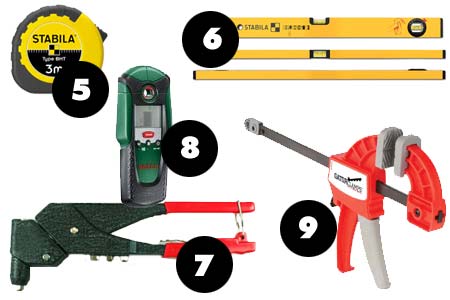Basic DIY hand tools
Planning to do some home improvements? Here are a selection of hand tools you may need for the job:
Safety glasses
First and most important on the list... No matter what other tools you buy, don’t leave the hardware store without safety glasses. You will find types that are lightweight, stylish, wraparound affairs that look more like designer sunglasses than the bug-eye goggles of just a few years ago, and much more comfortable that the plastic goggles that make you feel that your diving in the deep rather than just drilling into wood.
Disposable dust mask
Sawing, sanding, scraping, and drilling create dust that can lead to lung disease, cancer, lead poisoning, and other serious ailments. Strap one of these nearly weightless disposable masks to your face before using any tools that generate dust.
Ear protectors
Essential to prevent hearing loss when using loud tools such as power saws over an extended period of time.
Cotton gloves
These protect your hands from nicks, cuts, splinters and abrasions and give you a firm, comfortable, no-slip grip.
1. Claw hammer
The hammer is perhaps the oldest tool and is still one of the most often used. There are now hundreds of varieties and accessories, but a claw hammer is the one that you are going to use most of the time. are the ones you can’t live without.
2. Handsaw
The most basic of cutting tools are still the essentials for any kit. But they’ve been improved over the years to work better and safer.
Almost eclipsed by a plethora of power saws, the humble handsaw still has many advantages: it’s inexpensive, lightweight, compact, quiet, relatively safe, and can trim wood in close quarters and without being tethered to a power cord. Redesigned, hardened, razor-sharp teeth help this Kobalt handsaw cut much faster than older step-tooth saws.
3. Backsaw And Mitre Box
For precision work, such as cutting wood and some plastics precisely square or at accurate 45-degree angles, choose a backsaw and mitre box. Essential for cutting mouldings and picture frames to ensure tight corner joints, a mitre box is an inexpensive alternative to a compound mitre saw.
4. Tongue and groove pliers
From working with tiny parts to turning rusted fasteners or holding pieces of wood firmly while you cut, gripping tools are indispensable helpers. Adjustable jaws allow you to grip large-diameter items securely. Long handles further amplify your leverage. Grab this tool for taking apart plumbing to unclog drains and for holding large items while working on them.
5. Tape measure
Before you start building, you’ll want to lay out your project to make sure everything’s level, square, and precisely measured.
Look for a locking blade, belt clip, and sturdy case. Small measures are light and easy to carry; larger models are easier to read and have longer blades.
6. Spirit level
Available in various lengths, these tools have bubble vials showing level and plumb. Use them to level everything from pictures and wall shelves to tables.
7. Pop riveter
This tool lets you join pieces of metal too thin to screw together, and it also works when you can’t reach the back of your project to fasten a nut on a bolt.
8. Detector
This electronic device from Bosch quickly locates structural members hidden behind plaster and inside drywall, allowing you to fasten heavy items such as large artwork, shelves, and mirrors to wall studs, drill into bathroom or kitchen walls and prevent
accidentally drilling into electrical wiring or water pipes.
9. Bar clamp
Unlike screw-operated C-clamps, bar clamps allow you to close the jaws with one hand, leaving your other hand free to align the pieces you’re clamping. Use for applying pressure to glue joints and for holding items while cutting, drilling, or fastening.



